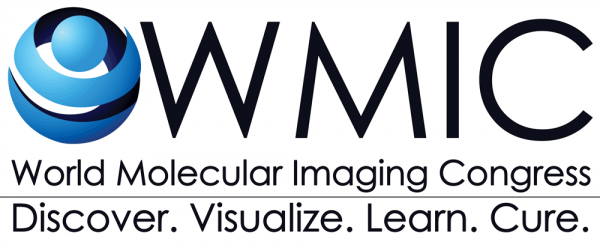Dual-mode Prussian blue magnetic nanocubes for photoacoustic imaging and MRI
Diego Dumani, The University of Texas at Austin
Molecular imaging promises to aid in early diagnosis of disease and treatment guidance. Numerous contrast agents have been developed for single modalities [1] [2]; however no single modality is ideal for all stages of patient care. To address this issue we developed Prussian blue nanocubes (PBNCs), which have high near-infrared absorption and are responsive to a magnetic field. These properties can be utilized with a myriad of optical and magnetic based imaging modalities for initial diagnosis, treatment guidance, and/or treatment monitoring.
We characterized the size (~43 nm) and shape using a combination of scanning and transmission electron microscopy. In addition, we characterized the optical absorbance spectra using a spectrophotometer and demonstrated the magnetic attraction of the PBNCs by observing the solution clearing and a pellet formation when exposed to a magnetic field.
To demonstrate the feasibility of PBNCs as a multimodality contrast agent, we used photoacoustic (PA) imaging and magnetic resonance imaging (MRI). We demonstrated the photostability of PBNCs using a 5 ns pulsed laser and exposed the PBNCs to 900 laser pulses across various fluences ranging from 5-28 mJ/cm2. Unlike the more commonly used gold nanorods (~8.5 mJ/cm2) or silica-coated gold nanorods (13 mJ/cm2), no degradation in the PA signal was observed. A gelatin phantom with inclusions of superparamagnetic iron oxide nanoparticles (SPION), PBNCs and SiO2-AuNR was imaged to compare PA signal generation and to obtain optical absorption spectra. The mass of iron was matched on PBNCs and SPION inclusions, and the SiO2-AuNR were concentrated to match the absorbance of PBNCs. The PBNCs showed a brighter signal than that of SiO2-AuNR and SPION.
To demonstrate MRI contrast, a phantom of three plastic tubes containing water, SPION and PBNCs solutions was imaged using a 3T MRI scanner. First, a T1 weighted scan showed all tubes to identify their location. A T2 weighted scan was performed by keeping the repetition time (TR) constant at 3000 ms and varying the echo time (TE) from 50 ms to 1600 ms. SPION appear dark for all T2 weighted images, while PBNCs appeared bright for shortTE and dark for long TE. A difference image was taken from scans at TE = 1600 ms and TE = 50 ms to reveal only the tube containing PBNCs.
Our initial studies indicate that PBNCs are a promising multimodality contrast agent. Although we only demonstrate feasibility as a PA and MRI contrast agent, PBNCs can be utilized with other modalities, including magneto-motive imaging, and magneto-therapy. In the future we will better characterize the magnetization and potential fluorescent properties, and translate our findings for in-vivo imaging studies.
References:
[1] Luke, G. P., Yeager, D., & Emelianov, S. Y. (2012). Biomedical applications of photoacoustic imaging with exogenous contrast agents. Annals of biomedical engineering, 40(2), 422-437.
[2] Na, H. B., Song, I. C. and Hyeon, T. (2009), Inorganic Nanoparticles for MRI Contrast Agents. Adv. Mater., 21: 2133–2148. doi: 10.1002/adma.200802366
